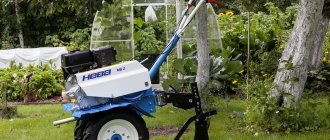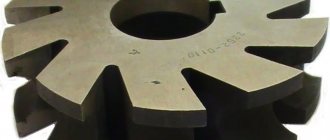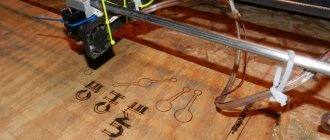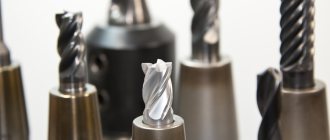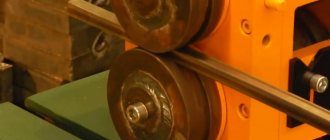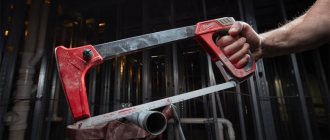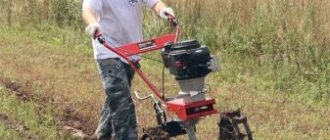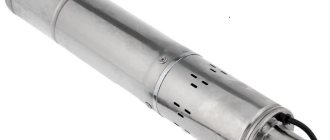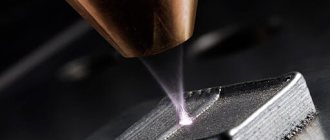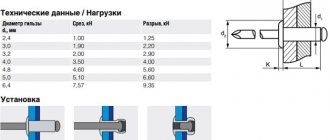Virtually all manufacturers of walk-behind tractors supply garden equipment with tillers in disassembled form. Their assembly is often difficult, especially if the number of cutting knives in each section is 4. Difficulties are associated with the large number of assembly parts and the need to correctly place them on the sleeve. Let's find out how to correctly and quickly assemble cutters on a walk-behind tractor with a different number of cutting blades. Assembly elements are mounted using washers, nuts and bolts.
What types of cutters are installed on walk-behind tractors?
With a walk-behind tractor, you can cultivate any type of soil and perform different types of work - aeration, loosening the soil or crushing it into a lump, removing the roots of perennial weeds, mixing soil layers or fertilizers. The functions and capabilities of garden equipment directly depend on the type of installed cutters - spring, hook, flat ripper, etc. Three types of attachments are considered the most versatile, popular and functional:
- Saber-shaped. An active type of cutter for a walk-behind tractor that requires assembly. They are installed on most models of garden equipment. The cutter can consist of 2-5 sections with knives that determine the width of the cultivation. Made of steel, it provides optimal depth of loosening of soft and untrodden soil. Plant roots do not get wrapped up.
Saber-shaped cutter options with 3 and 4 knives
- Crow's feet. Inactive type of cutters with a non-separable design. Designed for processing hard, rocky and trampled soils. The cutting blades are good at breaking up plants remaining in the soil, removing the roots of perennial weeds, and promoting aeration. The blade of the knife can be shaped like a spatula, triangle or trapezoid.
Popular modifications of crow's feet cutters
- Spiral, or “Virgin” Inactive type of all-welded cutter. It is designed for deep soil plowing, virgin soil cultivation, and loosening. The design is reliable, but the processing speed is reduced. Consists of 2-4 sections.
Two sections of a spiral-shaped cutting element
The owner of a new garden equipment will need detailed instructions to assemble the cutters on a saber-type motor cultivator, since 9 out of 10 models are supplied with disassembled attachments. The other two types of cutters only need to be hung.
Functions
The milling cutter is the main working element that directly performs the work of cultivating the land. Therefore, so much depends on quality.
The sharp part makes a cut in the ground, making a revolution and rising up. The shovel picks up and lifts part of the earth. Thus, the earth is loosened, mixed and aerated (saturated with air), which all together is the main task in cultivating (cultivating) the land.
Along the way, the blade either cuts the roots of the weeds, or catches them and pulls them out. In any case, the growth of perennial root-propagating weeds is temporarily disrupted.
Assembly elements of saber-shaped cutting tools
The collapsible saber-shaped structure consists of:
- left and right knife (blade);
- shaft (bushings) - metal pipe with a diameter of 50 mm, a wall thickness of 4 mm;
- anther;
- flange, plate (may have different geometries) - steel sheet up to 15 mm thick;
- fastening elements.
Components of a 4-blade cutting device
The cutting blades are connected to the plate using bolts so that the sharp edges enter the ground when the walk-behind tractor moves forward. In this case, the right and left knives on the sections should alternate.
Specifications
Forza MB-105 walk-behind tractors are available with 3 engine powers: 7, 9 and 15 hp. With. They have dimensions of 1.5 x 0.61 x 1.15 m. The equipment weighs about 125 kg with a filled tank. Equipped with an adjustable handle that can be removed for easy transportation.
It has two fairly large wheels with a herringbone tread, which gives the device increased maneuverability. With all this, it is natural to change them to larger ones. The unit can create movement both forward and backward. The complete set of walk-behind tractors may differ, but the sample has: two pneumatic wheels, instructions for the device itself and its engine, a removable handle, a coulter, protection wings and a set of fasteners.
How to properly assemble knives on a walk-behind tractor with 3 cutting blades?
The main mistake when assembling the cutting tools of a motor cultivator is installing left-sided blades on the left section, and right-sided blades on the right. This knife mounting scheme is functional, but has a number of shortcomings:
- the increased distance between the right and left mounted parts (from 20 to 25 cm) reduces the quality of tillage - after the passage of the equipment, a wide strip of uncultivated land remains;
- the cutting blades do not overlap each other, which reduces the quality of soil loosening;
- wear of cutting parts increases;
- the comfort of using special equipment is reduced - the motorized cultivator will bounce when passing the strip due to the asymmetrical entry of the cutting tools into the ground.
Correct assembly diagram for a 2-section cutter
To correctly assemble the knives on a walk-behind tractor, you must adhere to the principle of diagonals and carry out all installation steps symmetrically. Some models of special equipment are equipped with a left and right cutter with a removable last section. Their number does not affect the installation principle of knives. The main thing when attaching the cutting blades to the next section is to shift them so that, when viewed along the bushing, they “pass” through the formed angle of the already fixed ones.
Installation of the first knife 2 sections
If the diagonal (offset) assembly is observed, the blades of the sections will cut the soil sequentially one after another. The rotation of the left and right cutter will be symmetrical. With correct installation of prefabricated elements, uniform operation and load distribution are guaranteed.
Do I need to sharpen it?
The answer to this question is yes when using crow's feet. There it is necessary to carry out regular inspection and sharpening of cutting edges. The welded design of such cutters does not imply the use of hardened metal, and therefore bends, bursts and becomes dull.
When working with saber cutters, sharpening is not only impractical, but also harmful. In addition, the product passport clearly states: “Do not sharpen edges.” In their work, rotation speed and soil composition are important. Cultivation is the process of controlling weeds, breaking up the crust and mixing fertilizer with the soil.
Instructions on how to assemble cutters for a cultivator
When starting work, it is more convenient to separate the left and right knives and prepare the keys for tightening the threaded fasteners. A three-bladed left-hand cutter will contain two left-handed and one right-handed blades in each section, and a right-handed one will contain two right-handed and one left-handed blades. Before attaching the cutting elements, you should make sure that the sharp edges are directed forward along the walk-behind tractor.
Assembling the first outer section
To assemble the left-hand cutter correctly, do not deviate from the instructions:
- Place the shaft with plates for fastening knives vertically.
External view of the shaft with three flanges
- Place the left blade parallel to the flange so that their edges and mounting holes line up.
- Place the second left knife at an angle from above.
- Secure both blades with a bolt from the outer edge, but do not tighten.
- Place the right knife on top of the first two blades at an angle.
- Secure with bolts and tighten.
Principle of installation of cutting blades
In the figure above, the cutting elements of one group are installed. To correct the error, you need to replace the upper knife with the left one.
Assembly of subsequent sections
The algorithm for installing components will be similar. The difference lies in the position of the first element on the next flange. The blade must be installed not parallel to one of the knives of the already assembled group, but so that it divides the angle (diagonal) between the already fixed knives.
The elements on the third flange must be installed offset relative to the group of knives of the second section, the fourth - offset relative to the third.
Installation of the first knife 2 sections
Nuances of assembling a 4-blade cutter
In order to correctly assemble the cutters on a cultivator with four cutting elements, the principle of diagonal displacement is also used. Only the blades are alternated sequentially, positioned on the flange perpendicular to each other. On one flange it is necessary to install one left one, then one right one, then the left one again, and complete the assembly with the right blade. The video provides detailed instructions for assembling and installing attachments with 4 cutting blades.
Motoblock Bright 135
Brait 135 is a high-performance walk-behind tractor designed to work on large areas. The owners of this car receive a wide range of opportunities, because of which it is natural to properly evaluate the potential of the equipment. If desired, the walk-behind tractor can be equipped with the necessary equipment, with which the performance of this machine will be comparable to premium models. Right away, Brait 135 is a very compact and maneuverable model. It is in high demand among gardeners, summer residents, farmers, and is also needed in urban farming. Let's consider the advantages of the walk-behind tractor, as well as its capabilities and characteristics.
Special cases
Mills for a motor cultivator with 2-3 sections usually have a solid shaft. But often there are models with collapsible or additional bushings, hung in sections. The diagonal principle of assembling knives in all of these cases will be identical to that described above. The process is complicated only by the need to perform additional steps - to assemble the entire cutter together.
Stoppers for mounting a group of knives
The structure is installed using steel stoppers. They reliably fix all elements of attachments and prevent loosening of connections under dynamic loads.
Hanging an additional section
How to make a blade for a walk-behind tractor with your own hands
Assembling an attachment such as a snow plow is a fairly simple task. However, during the manufacturing process you should follow a few simple rules.
The device to be assembled must meet a number of important criteria:
- Durability. The strength of the knife and bucket must be high enough for the equipment to serve uninterruptedly for at least 5 years. All units and components must be assembled from such materials and using such connections that they can withstand the maximum load.
- Dimensions. There are standard industrial sizes, which, if made by hand, may vary. However, you should not go too far beyond the standard limits: it makes sense to make the width of the blade from 80 to 130 cm, and the height - 30-50 cm.
- It is advisable to provide a lifting mechanism that can be easily implemented using levers or hydraulics. Thanks to this, it will be possible not only to clear snow and remove garbage, but also to remove it from the site.
- The presence of a swivel joint. If you have the ability to tilt the blades up and down and left and right, snow removal is better.
- Rubber shock-absorbing strip at the bottom of the bucket. This part is needed to protect the unit from impacts, the shovel from breakage and deformation, and the road surface from damage.
- Convenience of quick installation/disassembly of the attachment on the walk-behind tractor.
Before starting production, first of all, you should decide on the dimensions. A standard snow shovel has a width of 100 cm with a metal thickness of 2-3 mm. The material for manufacturing should be chosen of high quality.
The first step is to collect the necessary set of tools and materials. You will need:
- welding machine;
- grinder with discs;
- drill with metal drills;
- spanners;
- pliers;
- steel barrel with a volume of 200 liters or an empty gas cylinder;
- small thick steel sheet;
- a piece of square pipe 1 m long and with a cross section of 40×40 mm;
- iron strip – 850×100×3 mm;
- sheet of thick, high-strength rubber;
- bolts (M12, M10, M8), washers, nuts.
In addition, you need to take care of the drawings - find the desired design on the Internet or draw it yourself, taking into account your own wishes and operating conditions of the unit.
The optimal material for making a ladle is a metal 200-liter barrel, since this container initially has the required bend. If such a container cannot be found, sheet steel of the required thickness will do, but it will have to be heated and bent to the correct radius. If you have a barrel, the first step is to cut off the bottom and lid with a grinder to create a wide pipe. Next, you need to cut it from top to bottom into three equal parts. Two of them are welded around the perimeter, and the remaining third is opened with a grinder into several strips, the purpose of which is to provide the structure with the required rigidity. Two strips are attached to the bottom and top edges of the blade, and the rest are spread across it for reinforcement.
In order to provide the shovel with additional efficiency, a knife is fixed at its bottom. It is made from a metal strip. 3 holes with a diameter of 5-6 mm are drilled in the workpiece, located at a distance of 100-120 mm from each other. A rubber gasket is fixed to them, and the knife itself is bolted to the bucket.
This is interesting: a disk hiller for the Salyut walk-behind tractor.
Having made the shovel, proceed to assembling the mount. This part is made from a pipe and is attached to the center of the blade by welding. Next, a semicircle of thick sheet metal is fixed, in which several holes are made to fix the angle of rotation of the bucket.
After this, an L-shaped holder is made from a piece of pipe, which is fixed with the short side in a semicircle, and the long side is fixed in the frame of the walk-behind tractor. The height of the blade is adjusted using two bolts fixed in an additional part, also made of a pipe - it is put on the holder.
Recommendations for assembling knives
Manufacturers of cultivators try to simplify the assembly of attachments as much as possible. Therefore, two central technical holes are provided on the flanges on opposite sides of the square. They allow you to accurately place cutting elements on the plate.
Location of technical holes on the plate
The Two Hole Rule is as follows. When placing the very first knife on the plate, it should cover one of the technical holes and be parallel to the edges of the flange. Next, the installation of the following elements is carried out at an angle to the first. It is extremely difficult to make a mistake in this case and get confused.
Solid shafts with mounting plates can have a special design. The flanges on them may already be offset - rotated relative to the adjacent one by several degrees.
Mounting plate locations
To make it easier to install the blades according to the instructions above, it is not recommended to fully tighten the nuts. This procedure should be performed at the final stage after the master is convinced that the cutter is assembled strictly according to the diagram.
There are several types of cutters. Depending on the form, the following are available for sale:
- Devices with saber-shaped knives - they are in greatest demand among buyers and allow you to perform a wide range of work. The main advantage lies in the shape of the blades and the material - the cutters are made of steel and can be removed at any time. There is practically no vegetation wrapped around them, which allows you to plow the soil many times faster;
- Crawler-foot cutters for cultivators are a new solution on the equipment market. This type of equipment is often used for plowing hard soils. It cannot be disassembled, making it more durable than the first type of cutter. Among the disadvantages is the frequent wrapping of weeds around the blades. Because of this, most farmers use these cutters to work on “clean” soil. Often, “crow's feet” are used for plowing before planting potatoes, as well as for treating the soil to prevent the appearance of Colorado potato beetles and other pests.
Today you can purchase additional cutters of the required width at any gardening equipment store. However, at a reasonable price it is most often possible to buy Chinese products that are not particularly durable. In this regard, it would be quite reasonable to try to make cutters yourself.
Milling cutters for motor cultivators do not have a complex design. Before you start creating elements yourself, you need to carefully study the store options. This will make it possible to take into account all the design features of the equipment and produce effective equipment.
Before work, you need to make a drawing or use a ready-made diagram. It will need to indicate the material of each of the parts, the sequence and method of fastening.
After this, you need to prepare all the materials. If the design will use figured elements, then it is better to immediately order them from the master.
When creating a cutter, special attention must be paid to correct assembly. Try to avoid any deviations related to the design, because any mistake can significantly reduce the efficiency of the cutters
Moreover, incorrectly assembled equipment will pull the cultivator to the right or left.
An important factor is the location of the teeth. They must be installed in exactly the same position as in the design of store products.
Experts do not recommend making cutters with a diameter of more than 50 cm. Equipment of this size can sink into the ground 26 cm, covering a strip 1 meter wide. This is more than enough for high-quality plowing.
Saber-shaped cutters are considered safer and are not capable of harming the operator if he falls on the structure. The knives on them have a transverse arrangement and consistently sink into the soil, without jerking.
To extend the life of homemade cutters, you must adhere to the rules for using equipment. When starting the cultivator engine, all blades must be positioned above the soil surface. After switching the engine from idle, the blades should be slowly lowered and plowing begins.
Not knowing whether homemade cutters need to be sharpened, many beginners make a lot of mistakes. It must be remembered that the more often sharpening is performed, the better the result of the soil treatment will be, and the longer the knives will not succumb to corrosion.
A few words about installing attachments
After assembling the knives, all that remains is to install the assembled cutters on the walk-behind tractor using stoppers. For convenience, it is better to lift the special equipment and fix it in this position. Next you need to remove the wheels. Carefully place the boot on the support shaft, secure the structure on the left and right with a stopper. Check the connection is secure.
The final result of the build
If the cutter design is completely prefabricated, then installation can be performed sequentially section by section.
Installation sequence
It is recommended to put the motor cultivator into operation only after the correct assembly and installation has been checked. There should be no play caused by weak tightening of nuts or distortions when hanging equipment. High-quality work guarantees a long service life of machinery and equipment.
Advantages
Milling today is the most important agricultural technique.
Deep cultivation of the land is carried out in two ways - plowing and milling. The first method was the only one for thousands of years, since there were simply no cutters before.
The advantage of milling: high-quality and complete loosening of the soil, aeration and mixing of layers. The plow simply makes a half or full revolution of the formation. At the same time, soils with a dense structure may not crumble and remain in large clods. This requires additional processing with harrows, disc cultivators or small coulters, and in small areas with rakes.
An additional operation greatly increases labor and energy costs and reduces overall labor productivity. After cultivation with a milling cutter, no large lumps remain on most soils, and the soil is immediately completely ready for sowing.
Continuous tillage cultivator for walk-behind tractor. What is a cultivator?
Continuous tillage cultivators usually have tines with arched and S-like posts attached to them. The blade has a certain angle of inclination relative to the horizontal plane. The blade grip width is usually 270-300 mm. Such paws perfectly loosen even fairly dense soil and cut weeds well. The cultivation depth is up to 120 mm. The paws may have spring struts. They loosen the soil to a depth of 16 cm. During cultivation, they constantly vibrate due to springs and self-clean, throwing off the remains of the stems.
Image 2. Cultivator KPS-4.
Tines with S-shaped tines can be used in rocky areas of the field. The total working width of the KPS-4 cultivator (image No. 2) is 4 m. A hitch of several such units is attached to a 14 kN class tractor. Additionally, harrows are also attached. Modifications of this unit:
- KPS-4 - trailed cultivator;
- KPS-4-02 - a mounted structure with pointed legs;
- KPS-4-03 is a mounted cultivator equipped with ripper tines with arched racks;
- KPS-4-05 is a mounted cultivator equipped with ripper arms on S-shaped stands.
Ripper shares with a working width of 270 mm are mounted on the front row of rows, and those with a width of 330 mm are mounted on the rear row of rows. This is done so that the edges of the rear row overlap the paws of the front row by 40-50 mm during operation. This arrangement ensures complete cutting of all weeds. The working paws must be periodically monitored and the cutting edges must not be completely dulled. Dull blades need to be sharpened promptly. The working depth is adjusted by lowering or raising the support wheels. The higher the wheels are above the ground, the deeper the level of processing. The adjustment should be carried out on a level surface with the frame positioned horizontally.
Additional options
The Brait 80 walk-behind tractor is adapted to work in conjunction with mounted and trailed equipment made in Russia and abroad. Thanks to this versatility, the scope of application of the BR 80 expands to the level of a modern, real mini-tractor.
The following types of additional equipment can be installed on the BR 75 and 80 models:
Hay mowers. Motor power 13 hp. more than enough to provide sufficient torque for a 2-blade rotary mower. With a working width of 135 cm, the mower clears up to 0.2 hectares of grass and bushes per hour.
Plows. Depending on the specific task being performed, plows with one or more coulters are used. Single-body tools are used for raising virgin soil, laying trenches and loosening soil when constructing pits.
READ What kind of oil to pour into the Zubr walk-behind tractor
Hillers. Suspended and wheeled hillers are attached to the body bracket of the Brait To create and weed beds, disk and arrow hillers are used, covering 1 or 2 rows.
Snow plows. Rotary snow blowers and brushes are connected to the power take-off shaft. To clean paths and paths, you can use the front blade with adjustable angle of attack.
Devices for improving cross-country ability. The wheelbase is extended by installing axle extensions and wheel linings. You can increase traction with the ground using wheel and external weights. For plowing, it is better to use iron lugs.
Trailers. The most easily accessible device in this series is an adapter that allows the operator to control the walk-behind tractor while sitting on a trailed chassis. More complex and expensive units are cargo and combination carts. Trailers have 1 or 2 axles.
- Landing kits. You can attach a potato planter and potato digger to the walk-behind tractor bracket and the trailer drawbar. These tools allow you to process up to 1 hectare per day
13 horsepower is enough power to power heavy stationary equipment. The walk-behind tractor is used as a drive to operate a sprayer, water pump, mulcher and electric generator.
